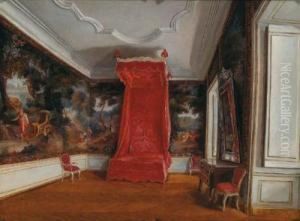Esch Mathilde Paintings
Mathilde Esch was a German-American artist noted for her contributions to early 20th-century art, particularly within the realms of painting and printmaking. Born in Germany in 1870, Esch emigrated to the United States where she became an integral part of the burgeoning art scene, particularly within New York City's vibrant cultural landscape. Her work is characterized by a unique blend of European artistic traditions and the emerging styles of American modernism, making her an important bridge between the two worlds during a critical period of artistic evolution.
Esch's artistic journey began in Germany, where she was initially influenced by the academic traditions of European art. However, upon her arrival in the United States, she quickly immersed herself in the experimental and diverse art scene of New York. She was particularly drawn to the Ashcan School's focus on realism and the depiction of everyday life, which resonated with her own artistic inclinations. Despite this, Esch did not confine herself to any single movement. Her work also shows elements of Impressionism and Expressionism, reflecting her versatility and openness to diverse influences.
Throughout her career, Mathilde Esch exhibited her work widely, participating in numerous group and solo exhibitions. She was a member of several important art organizations, which played a crucial role in the promotion of modern art in America. Her contributions were recognized by her contemporaries, and she was respected as a mentor by younger artists, helping to guide the next generation through a rapidly changing art world.
Esch's legacy is that of a pioneering artist who navigated the complexities of two different cultural and artistic landscapes. Her work not only reflects the transition from traditional European art to American modernism but also contributes a unique, female perspective to the narratives of early 20th-century art. Despite facing the challenges that came with being a woman in a predominantly male-dominated field, Esch carved out a space for herself and her art, leaving behind a body of work that continues to be studied and admired. She passed away in 1945, but her influence persists, offering insights into the dynamic and transformative period of art history in which she lived and worked.

